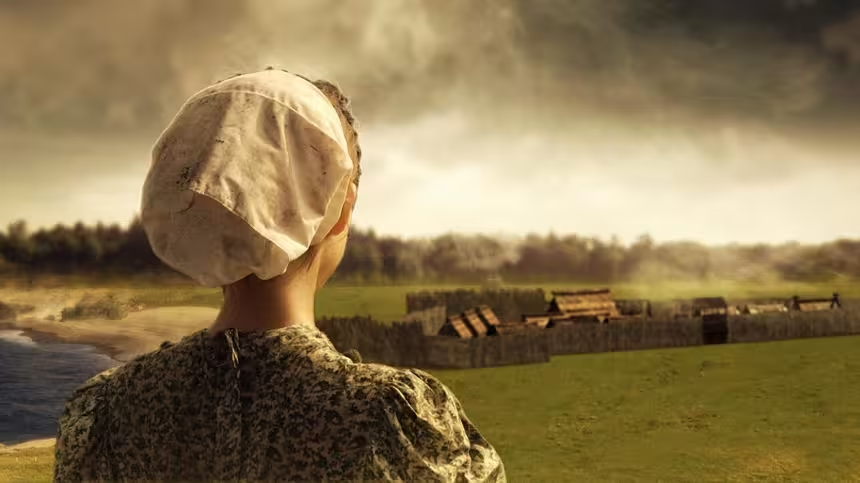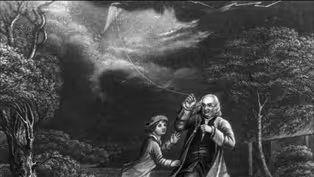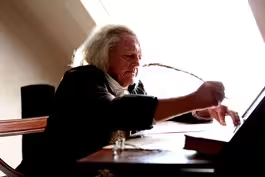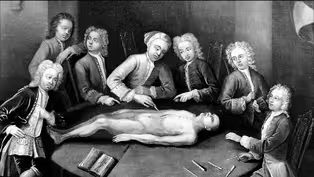
William Hewson’s Experiments and the Craven Street Bones
Clip: Season 14 Episode 1 | 2m 21sVideo has Closed Captions
Are the bones at Craven Street connected to William Hewson?
William Hewson, Benjamin Franklin’s neighbor at 36 Craven Street, was no ordinary physician. He was an anatomist. Hewson had conducted extensive research into the human lymphatic system and his detailed findings were recorded by leading anatomical artists of the day. Are the bones at Craven Street connected to William Hewson?
Problems playing video? | Closed Captioning Feedback
Problems playing video? | Closed Captioning Feedback
SECRETS OF THE DEAD is made possible, in part, by public television viewers.

William Hewson’s Experiments and the Craven Street Bones
Clip: Season 14 Episode 1 | 2m 21sVideo has Closed Captions
William Hewson, Benjamin Franklin’s neighbor at 36 Craven Street, was no ordinary physician. He was an anatomist. Hewson had conducted extensive research into the human lymphatic system and his detailed findings were recorded by leading anatomical artists of the day. Are the bones at Craven Street connected to William Hewson?
Problems playing video? | Closed Captioning Feedback
How to Watch Secrets of the Dead
Secrets of the Dead is available to stream on pbs.org and the free PBS App, available on iPhone, Apple TV, Android TV, Android smartphones, Amazon Fire TV, Amazon Fire Tablet, Roku, Samsung Smart TV, and Vizio.
Buy Now

Providing Support for PBS.org
Learn Moreabout PBS online sponsorship- Hewson entered the scene of anatomy at a really ideal crossroads.
This was the time that they were looking at practical dissections as an art of teaching.
And instead of just researching these things and reading about them, there was much more of a hands-on approach to medicine and science.
- [Narrator:] So did the activities of William Hewson hold the key to the gruesome discovery at Craven Street?
Perhaps the bones were not the result of murders, but were, in fact, anatomy specimens.
The pit of bones held a vital clue.
Hewson conducted extensive research into the human lymphatic system.
And his detailed findings were recorded by leading anatomical artists of the day.
But to earn his place in the Charter Book, he'd gone a step further, giving a groundbreaking lecture at the Royal Society.
- Now, up until this point, it was believed that humans had a lymphatic system.
But Hewson really set out to prove that this existed in other species, as well.
- [Narrator:] His test subject took everyone by surprise.
It wasn't human at all -- it was a green sea turtle.
- Now one of his most ingenious experiments took place with a dead turtle.
And Hewson basically injected mercury into the turtle and watched how it went through the lymphatic system.
- [Narrator:] Could the turtle in Hewson's experiment be the very same one Professor Hillson discovered in the pit of bones?
- This is some of the bones of the shell of the turtle.
And one of the fascinating things was there was a little bead of mercury actually resting inside the bone of th shell.
And it's exciting because it's a very clear association with Hewson.
The find of mercury in association with the bones of a turtle.
- [Narrator:] This was a dramatic turning point in Professor Hillson's mission to find the source of the bones at Craven Street.
He now had compelling proof they were the result of William Hewson's work.
Could Benjamin Franklin be ruled out as a suspect?
Ben Franklin’s Scientific Achievements
Video has Closed Captions
Clip: S14 Ep1 | 3m 23s | Franklin was curious about the world and he operated in it as a gentlemanly scientist. (3m 23s)
Preview | Ben Franklin's Bones
Video has Closed Captions
Preview: S14 Ep1 | 30s | Could Benjamin Franklin have been responsible in some way for the bones in the basement? (30s)
The Rise of the Body Snatchers
Video has Closed Captions
Clip: S14 Ep1 | 2m 37s | Watch how the shortage of human cadavers turned anatomists to the criminal underworld. (2m 37s)
Providing Support for PBS.org
Learn Moreabout PBS online sponsorshipSupport for PBS provided by:
SECRETS OF THE DEAD is made possible, in part, by public television viewers.


















